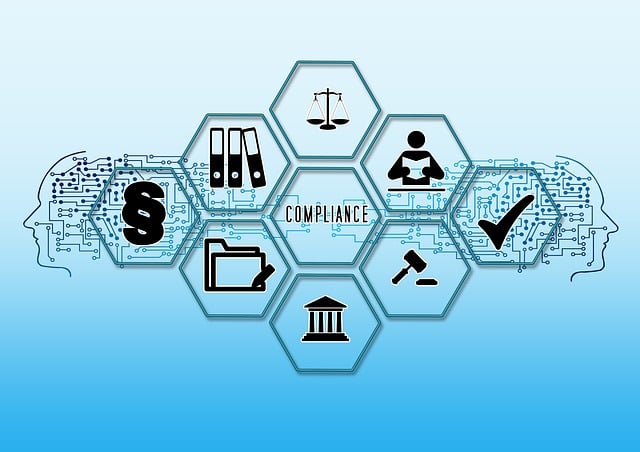Select DOT Compliance is a comprehensive set of regulations by the Department of Transportation (DOT) aimed at enhancing safety and operational efficiency in the transportation industry. It includes governing vehicle condition, driver fitness, record-keeping, and hazard material handling. Achieving compliance involves identifying relevant DOT rules, understanding industry-specific requirements, implementing emergency preparedness protocols, leveraging fleet management software, conducting regular training, and using advanced driver performance monitoring systems. Training programs equip staff with knowledge of DOT regulations, fostering a culture of awareness and accountability. Continuous monitoring and real-time data analysis ensure proactive adherence to safety standards, contributing to a safer and more efficient transportation network.
In today’s regulated landscape, ensuring Dot compliance is non-negotiable. This comprehensive guide explores the intricate world of Department of Transportation (DOT) regulations, offering a strategic roadmap for businesses aiming to navigate this complex environment seamlessly. From comprehending essential DOT guidelines to implementing robust compliance strategies and empowering staff through training, we delve into actionable steps. Discover how continuous monitoring and improvement can cement your organization’s commitment to Select DOT Compliance, fostering a culture of safety and regulatory excellence.
- Understanding DOT Compliance: An Overview
- Identifying Relevant DOT Regulations
- Implementing Effective Compliance Strategies
- Training and Education for Staff
- Continuous Monitoring and Improvement
Understanding DOT Compliance: An Overview

Understanding DOT Compliance involves grasping a set of regulations designed to ensure safety and efficiency in the transportation industry. The Department of Transportation (DOT) establishes and enforces rules that govern various aspects, from vehicle condition and driver fitness to record-keeping and hazard material handling. For carriers, adhering to these standards is not just a legal requirement but also a cornerstone of operational excellence.
Select DOT Compliance encompasses a spectrum of practices, including regular inspections, adherence to dot record keeping standards, and integration of transportation safety technology. Meeting these regulatory compliance for carriers not only mitigates risks but also fosters a culture of accountability and continuous improvement. By prioritizing these measures, companies can enhance their operational transparency, reduce incidents, and contribute significantly to the overall safety of the transportation network.
Identifying Relevant DOT Regulations

Identifying Relevant DOT Regulations is a crucial step in ensuring comprehensive DOT Compliance. When selecting DOT Compliance solutions, it’s vital to understand which rules apply to your specific operations. The Department of Transportation (DOT) encompasses various modes of transportation, each with its own set of standards and protocols. For instance, the Federal Motor Carrier Safety Administration (FMCSA) sets guidelines for commercial motor carriers, focusing on driver record keeping, emergency preparedness, and performance monitoring systems.
Understanding these regulations involves a deep dive into both federal and industry-specific rules. Maintaining accurate records, implementing robust emergency preparedness plans, and adopting advanced driver performance monitoring technologies are key components in navigating the DOT landscape. This ensures that your operations meet not just minimum standards but excel in safety and efficiency, fostering a culture of responsible transportation.
Implementing Effective Compliance Strategies

Implementing Effective Compliance Strategies involves a strategic approach tailored to the unique needs of your trucking business. A robust DOT compliance program isn’t just about ticking boxes; it’s about cultivating a culture of safety and adherence to safety regulations for the trucking industry. Begin by thoroughly reviewing and understanding dot emergency preparedness protocols, ensuring drivers are equipped with the knowledge and resources to handle unexpected situations.
Leverage fleet management software solutions to streamline processes, monitor driver behavior, track vehicle maintenance, and ensure adherence to regulatory deadlines. This technology not only simplifies compliance but also enhances safety by enabling proactive intervention in potential hazards. Regular training sessions, clear communication channels, and continuous evaluation of your strategies are key to maintaining a high standard of DOT compliance.
Training and Education for Staff

Training and education are vital components when ensuring dot compliance within any transportation business. By investing in comprehensive training programs, companies can empower their staff to understand the intricacies of DOT regulations and their impact on day-to-day operations. This includes familiarizing employees with specific rules related to commercial vehicle maintenance records, driver qualifications, and safety procedures. Regular workshops and seminars can cover new guidelines, updates, and best practices, ensuring that everyone remains current and accurate in their roles.
A structured educational approach also facilitates open communication. Encouraging staff to ask questions and share insights creates a culture of awareness and accountability. Moreover, providing resources such as online modules or interactive guides on regulatory compliance for carriers can serve as valuable references, enabling employees to stay informed and proactively address any dot-related concerns. This collective effort paves the way for maintaining how to stay DOT compliant and fostering an environment where safety is a shared responsibility.
Continuous Monitoring and Improvement

In the realm of Select DOT Compliance, Continuous Monitoring and Improvement are paramount. Advanced driver performance monitoring systems play a crucial role in ensuring freight carrier safety standards are met. By tracking real-time data on driver behavior, these innovative tools help identify areas for enhancement, fostering a culture of constant refinement. Regular reviews of commercial vehicle maintenance records further solidify this commitment to safety and compliance.
This dynamic approach allows companies to proactively address potential issues before they escalate. Continuous monitoring enables businesses to stay agile, quickly adapting to regulatory changes and best practices in the industry. As a result, maintaining optimal compliance becomes not just a requirement but a competitive advantage, contributing to a safer and more efficient transportation network.
Ensuring dot compliance is a multifaceted process that requires a deep understanding of relevant regulations, strategic implementation, ongoing training, and continuous monitoring. By adhering to these essential practices, businesses can navigate the complex landscape of DOT compliance effectively. Selecting the right strategies and maintaining a culture of adherence will foster a safe and regulated environment, ultimately benefiting both operations and public safety.
